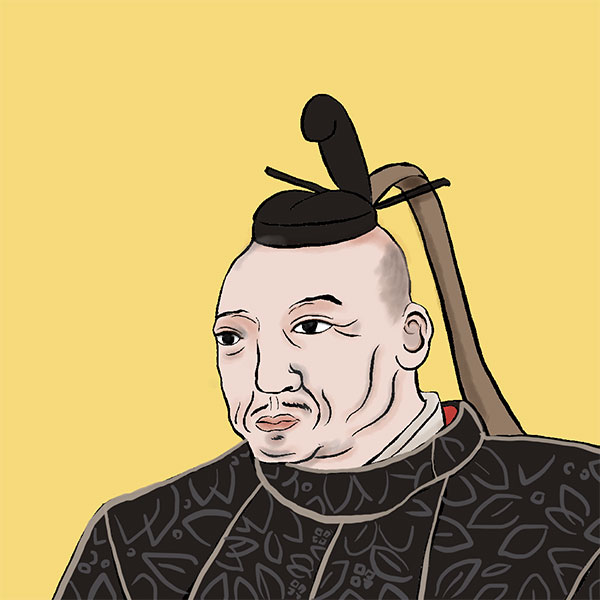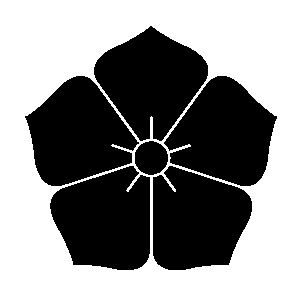- Kakegawa domain13 houses rule
- The Kakegawa domain was a domain that existed in Kakegawa City, Shizuoka Prefecture. Kakegawa is a key location along the Tokaido Road, and during the Warring States period, the three ruling families, the Imagawa clan, the Tokugawa clan, and the Takeda clan, fought fiercely for control. As a result, the land of Kakegawa was acquired.

Kakegawa CastleKakegawa City, Shizuoka Prefecture
- spring
- summer
- autumn
- winter
- TOP
- Chubu
- Shizuoka Prefecture
- Kakegawa Castle
| Other name | Kakegawa Castle, Kakegawa Castle, Kumogiri Castle, Matsuo Castle |
|---|---|
| castle construction | 1469-1487 |
| address | 1138-24 Kakegawa, Kakegawa City, Shizuoka Prefecture |
| telephone number | 0537-22-1146 |
| Opening hours | 9:00-17:00 (Entry until 16:30) |
| closing day | Open all year round |
| Admission fee | Adults 410 yen / Elementary and junior high school students 150 yen |
Kakegawa Castle is Japan's first authentic wooden castle tower. It was built by Kazutoyo Yamauchi as the castle's lord, and is known as the ``Famous Castle of the Tokai'' due to its beauty.
- Access to Kakegawa Castle
- 7 minutes walk from JR Kakegawa Station.
HISTORYKakegawa Castle built by Kazutoyo Yamanouchi
Kakegawa Castle is a Japanese flat castle located in Kakegawa, Kakegawa City, Shizuoka Prefecture. As Kakegawa is a strategic point along the Tokaido, it has often been the scene of battles since the Sengoku period. In particular, the fierce conflict between Tokugawa and Takeda is famous. Let's unravel the history of Kakegawa Castle, which was built in Kakegawa.
- Kakegawa Castle before the Edo period
- Kakegawa Castle is said to be the predecessor of Kakegawa Castle, which was built by Yoshitada Imagawa, the grandfather of Yoshimoto Imagawa, and ordered by Yasuhiro Asahina, a senior vassal, to build it during the Bunmei era in the middle of the Muromachi period. After the castle was built, the Asahina clan worked as the castle owner. In 1568, Ujimasa Imagawa, the lord of the Asahina clan, was attacked by both the Takeda and Tokugawa clans and fled to the Asahina clan. As a result, the castle was besieged by the Tokugawa army. The Asahina clan put up a good fight, and the Tokugawa army struggled to capture the castle. As a result, the Asahina clan surrendered the castle on the condition that the life of their lord, Ujizane Imagawa, be spared. As a result, the predecessor of Kakegawa Castle belonged to Tokugawa Ieyasu, and Ujima Imagawa relied on the Hojo clan of Odawara to succeed him. The predecessor of Kakegawa Castle was occupied by Ieyasu's senior vassals, Ienari Ishikawa and Yasumichi Yasumichi, who worked there as castle owners.
In 1590, when Tokugawa Ieyasu was transferred to Edo on the orders of Toyotomi Hideyoshi, Kakegawa Castle was given to Kazutoyo Yamauchi, known for his stories of ``Umazoroe'' and ``Ichigo Keijo.'' Kazutoyo Yamauchi carried out major renovations on Kakegawa Castle, adding additions to the castle tower and stone walls, transforming it into a modern castle. The currently restored castle tower of Kakegawa Castle was expanded by Kazutoyo Yamauchi. Kazutoyo Yamauchi served Tokugawa Ieyasu after the death of Toyotomi Hideyoshi, and because he sided with the eastern army at the Battle of Sekigahara in 1600, he was given the province of Tosa. - Kakegawa Castle in the Edo period
- After Kazutoyo Yamauchi was transferred to Tosa, Kakegawa Castle was ruled by several feudal lord families. Eventually, the Ota clan entered the castle and ruled the Kakegawa domain. In 1854, at the end of the Edo period, a major earthquake occurred in Ansei, and most of the buildings at Kakegawa Castle, including the castle tower, collapsed. Afterwards, Ninomaru Palace was rebuilt as it was also used as a place for political affairs, but the castle tower remained until the Meiji era.
- Kakegawa Castle after the Meiji period
- In 1872, Kakegawa Castle was abandoned and many buildings were demolished. However, the palace was saved from demolition and is still open to the public. Kakegawa Castle Palace was designated as an important cultural property in 1980, and is an important document that tells us about the architecture of the late Edo period.
The castle tower, which was lost in the Great Ansei Earthquake in 1994, was reconstructed with a wooden structure. It is the oldest of the restored wooden castle towers. The following year, the Otemon Gate was relocated and restored, and in 2006 it was designated as one of Japan's 100 Famous Castles. - summary
- Today, Kakegawa Castle is a tourist attraction in Kakegawa City, and many events are held there every year. Kakegawa Castle castle tower is currently undergoing restoration, and tours are scheduled to resume on April 1, 2023. You can also tour other buildings such as the palace.
Read biographies related to Kakegawa Castle
- Kazutoyo YamauchiAdvancement in the Sengoku period and the merits of Naisuke
- The era of warring states. There was a daimyo who served Oda Nobunaga, Toyotomi Hideyoshi, and Tokugawa Ieyasu, and whose territory included Kochi Prefecture. This is Kazutoyo Yamauchi. Kazutoyo's father opposed Oda Nobunaga in Owari Province and was destroyed. After wandering, Kazutoyo served the Oda family and survived the Sengoku period.

History of the Kakegawa domain, whose domain office is Kakegawa Castle
| Domain office | Kakegawa Castle |
|---|---|
| old area | Kakegawa, Totomi Province |
| stone height | 50,000 koku |
| Fudai/Tozama | Fudai |
| main lord | Matsudaira (Hisamatsu) family, Ando family, Matsudaira (Hisamatsu) family, Asakura family, Aoyama family, Matsudaira (Sakurai) family, Honda family, Matsudaira (Fujii) family, Hojo family, Ii family, Matsudaira (Sakurai) family, Ogasawara House, Ota family |
| Estimated population | 60,000 people (first year of the Meiji era) |
Includes Sadakatsu Matsudaira, half-brother of Tokugawa Ieyasu. Since then, Fudai daimyo have been replaced. The last Ota family remained stable and continued for seven generations.









